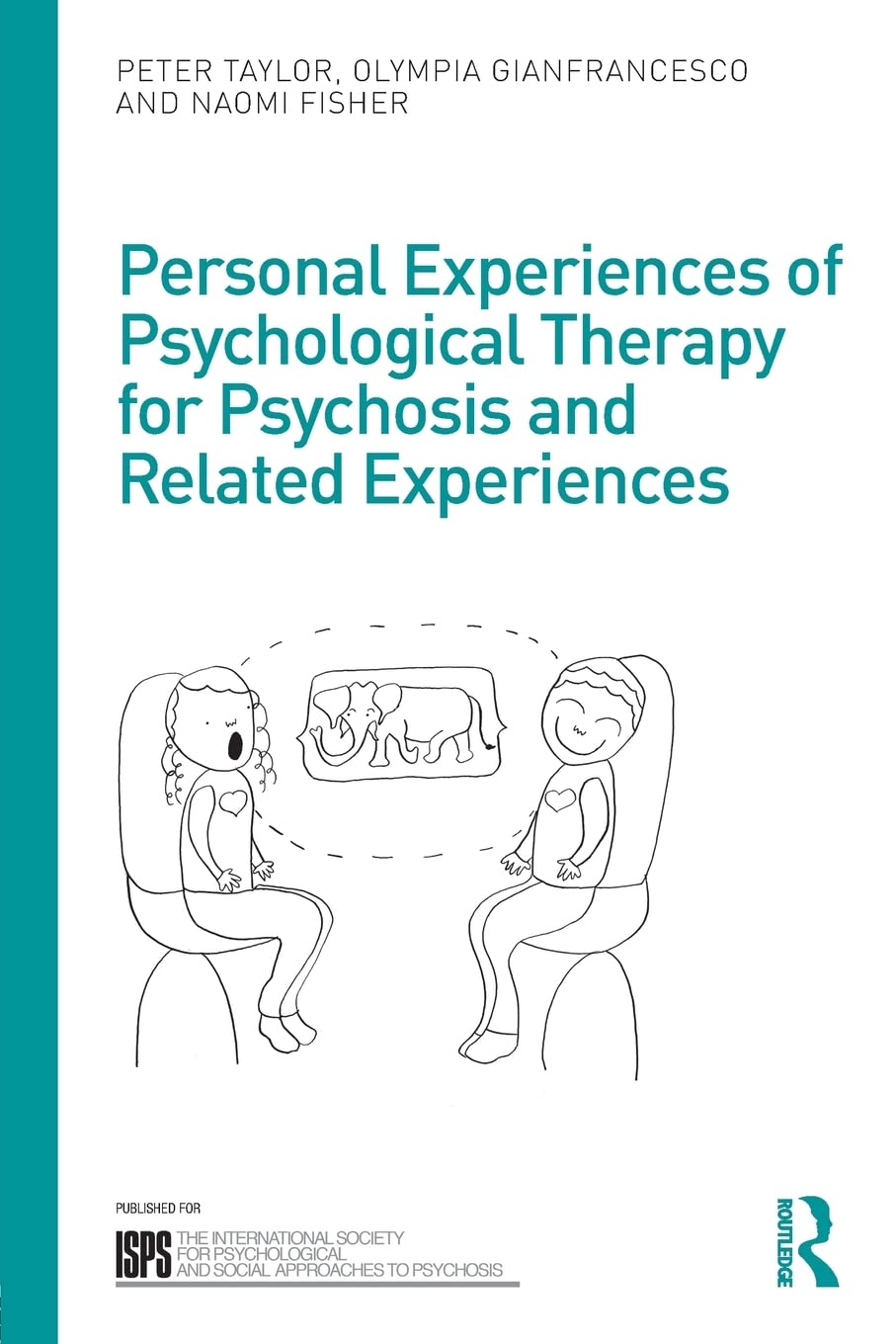Publications

Trauma-focused therapy in early psychosis: results of a feasibility randomized controlled trial of EMDR for psychosis (EMDRp) in early intervention settings
Filippo Varese, William Sellwood, Daniel Pulford, Yvonne Awenat, Leanne Bird, Gita Bhutani, Lesley-Anne Carter, Linda Davies, Saadia Aseem, Claire Davis, Rebecca Hefferman-Clarke, Claire Hilton, Georgia Horne, David Keane, Robin Logie, Debra Malkin, Fiona Potter, David van den Berg, Shameem Zia, Richard P. Bentall
October 2023. Psychological Medicine
DOI: 10.1017/S0033291723002532
Abstract
Background. Trauma is prevalent amongst early psychosis patients and associated with adverseoutcomes. Past trials of trauma-focused therapy have focused on chronic patients with psychosis/schizophrenia and comorbid Post-Traumatic Stress Disorder (PTSD). We aimed to determine thefeasibility of a large-scale randomized controlled trial (RCT) of an Eye Movement Desensitizationand Reprocessing for psychosis (EMDRp) intervention for early psychosis service users.Methods. A single-blind RCT comparing 16 sessions of EMDRp + TAU v. TAU only wasconducted. Participants completed baseline, 6-month and 12-month post-randomizationassessments. EMDRp and trial assessments were delivered both in-person and remotelydue to COVID-19 restrictions. Feasibility outcomes were recruitment and retention, therapyattendance/engagement, adherence to EMDRp treatment protocol, and the ‘promise of effi-cacy’ of EMDRp on relevant clinical outcomes.Results. Sixty participants (100% of the recruitment target) received TAU or EMDR + TAU.83% completed at least one follow-up assessment, with 74% at 6-month and 70% at 12-month. 74% of EMDRp + TAU participants received at least eight therapy sessions and97% rated therapy sessions demonstrated good treatment fidelity. At 6-month, there were signals of promise of efficacy of EMDRp + TAU v. TAU for total psychotic symptoms (PANSS),subjective recovery from psychosis, PTSD symptoms, depression, anxiety, and general health status. Signals of efficacy at 12-month were less pronounced but remained robust for PTSD symptoms and general health status.Conclusions. The trial feasibility criteria were fully met, and EMDRp was associated with promising signals of efficacy on a range of valuable clinical outcomes. A larger-scale, multi-center trial of EMDRp is feasible and warranted.

Eye movement desensitization and reprocessing therapy for psychosis (EMDRp): Protocol of a feasibility randomized controlled trial with early intervention service users
Filippo Varese, William Sellwood, Saadia Aseem, Yvonne Awenat, Leanne Bird, Gita Bhutani, Lesley-Anne Carter, Linda Davies, Claire Davis, Georgia Horne, David Keane, Robin Logie, Debra Malkin, Fiona Potter, David van den Berg, Shameem Zia, Richard Bentall
December 2020. Early Intervention in Psychiatry. 15(1):1-10
Abstract
Traumatic events are involved in the development and maintenance of psychotic symptoms. There are few trials exploring trauma‐focused treatments as interventions for psychotic symptoms, especially in individuals with early psychosis. This trial will evaluate the feasibility and acceptability of conducting a definitive trial of Eye Movement Desensitization and Reprocessing for psychosis (EMDRp) in people with early psychosis. Methods Sixty participants with first episode psychosis and a history of a traumatic/adverse life event(s)will be recruited from early intervention services in the North West of England and randomized to receive16 sessions of EMDRp + Treatment as Usual (TAU) or TAU alone. Participants will be assessed at baseline, 6 and 12 months post‐randomization using several measures of psychotic symptoms, trauma symptoms, anxiety, depression, functioning, service‐user defined recovery, health economics indicators and quality of life. Two nested qualitative studies to assess participant feedback of therapy and views of professional stakeholders on the implementation of EMDRp into services will also be conducted. The feasibility of a future definitive efficacy and cost‐effectiveness evaluation of EMDRp will be tested against several outcomes, including ability to recruit and randomize participants, trial retention at 6‐ and 12‐month follow‐up assessments, treatment engagement and treatment fidelity. Conclusions If it is feasible to deliver a multi‐site trial of this intervention, it will be possible to evaluate whether EMDRp represents a beneficial treatment to augment existing evidence‐based care of individuals with early psychosis supported by early intervention services.

TF-CBT and EMDR for young people with trauma and first episode psychosis (using a phasic treatment approach): Two early intervention service case studies
Joanna Ward-Brown, David Keane, G.E Bhutani, Debbie Malkin, William Sellwood, Filippo Varese
October 2018. The Cognitive Behaviour Therapist 11
DOI: 10.1017/S1754470X18000193
Abstract
The relationship between trauma and psychosis is well established with a large amount of overlap between the ICD/DSM (International Classification of Diseases/Diagnostic and Statistical Manual of Mental Disorders) diagnostic criteria for post-traumatic stress disorder (PTSD) and psychosis and/or schizophrenia. In spite of co-morbidity and evidence of the links and underlying mechanisms, trauma is rarely a focus of intervention in psychosis. Psychosis has often been on the list of exclusion criteria for PTSD research studies. There is a lack of literature on the impact of trauma work with people experiencing psychosis. The National Institute for Health and Care Excellence (NICE) (2014) suggests that Early Intervention in Psychosis (EIP) service users should be assessed for PTSD, and PTSD guidelines (NICE, 2005) followed for those who show signs of post-traumatic stress. There is a need to evaluate the effectiveness of therapeutic approaches for people with PTSD and co-morbid psychosis. These case studies aim to provide initial evidence of how two EIP clients experienced and responded to NICE-recommended psychological therapy for trauma. This study aims to test the feasibility of trauma work delivered via a phasic approach in a novel population. Two EIP clients received psychological therapy [including trauma-focused cognitive behavioural therapy (CBT) and eye movement desensitization and reprocessing (EMDR)] for identified traumatic experiences. Assessment outcome measures were utilized to establish the effectiveness of the interventions. Both clients reported significant improvements following therapy, including reduced trauma-related distress, reduced distress from symptoms of psychosis and improved quality of life. Clients with co-morbid PTSD and symptoms of psychosis are likely to benefit from recommended psychological treatments for PTSD. Further research is required to address generalizability to a larger population.
I also contributed a chapter on trauma focussed therapy using CBT and EMDR approaches in the book below (2019, Routledge):-

- Publisher : Routledge; 1st edition (30 Jan. 2019)
- Language : English
- Paperback : 218 pages
- ISBN-10 : 1138090506
- ISBN-13 : 978-1138090507


